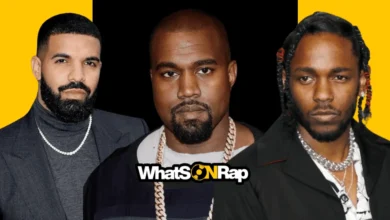Unveiling the Origins: Exploring Hip Hop’s Roots

Unveiling the Origins: Exploring Hip Hop’s Roots
Unveiling the Origins: Exploring Hip Hop’s Roots
Hip hop, a genre that has captivated audiences worldwide with its infectious beats and powerful lyrics, has its origins deeply rooted in the streets of New York City.
Born out of a fusion of African American and Latino cultures in the late 1970s, hip hop emerged as a creative outlet for marginalized communities to express themselves and share their experiences.
The Birth of Hip Hop
The birth of hip hop can be traced back to the Bronx, particularly the South Bronx, during a time of economic hardship and social upheaval.
As urban decay and neglect plagued the neighborhood, young people sought refuge in the vibrant and energetic atmosphere of block parties and community centers. It was here that the four elements of hip hop – DJing, MCing, graffiti art, and breakdancing – began to take shape.
DJ Kool Herc and the Breakbeat Revolution
At the forefront of this burgeoning movement was DJ Kool Herc, a Jamaican immigrant whose innovative DJing techniques laid the foundation for hip hop music.
Herc’s use of “breakbeats,” the instrumental sections of funk and soul records, revolutionized the art of DJing. By isolating and extending these rhythmic segments, Herc created a mesmerizing soundscape that became the backbone of hip hop music.
MCing and Graffiti Art
Accompanying DJ Kool Herc‘s beats were the rhythmic rhymes of MCs, or “masters of ceremony,” who used their lyrical prowess to engage and entertain the crowd.
Meanwhile, graffiti artists took to the streets, using spray paint and bold colors to transform the urban landscape into a canvas for their creativity. Together, MCing and graffiti art added depth and dimension to the emerging hip hop culture.
The Evolution of Hip Hop
As hip hop gained momentum, it spread beyond the confines of the Bronx and began to infiltrate mainstream culture. Artists like Grandmaster Flash, Afrika Bambaataa, and Run-D.M.C. helped popularize the genre, blending elements of funk, soul, and disco to create a unique and unmistakable sound.
The 1980s witnessed the rise of hip hop as a global phenomenon, with artists from coast to coast making their mark on the music industry.
Hip Hop Today
Today, hip hop stands as one of the most influential and commercially successful music genres in the world. From its humble beginnings in the Bronx to sold-out arenas and multi-platinum albums, hip hop has come a long way. Artists like Jay-Z, Kendrick Lamar, and Cardi B continue to push the boundaries of the genre, exploring new sounds and addressing social issues through their music.
- Related Content: Unveiling the Future: Artificial Intelligence Rapper
The origins of hip hop may be rooted in the streets of New York City, but its impact has reverberated across the globe.
From its inception as a form of self-expression for marginalized communities to its current status as a dominant cultural force, hip hop remains a testament to the power of music to unite and inspire. As we celebrate its roots and evolution, let us remember the pioneers who paved the way for hip hop’s enduring legacy.
FAQ’s
1. What is the origin of hip hop music?
Hip hop music originated in the Bronx, New York City, in the late 1970s, primarily as a cultural movement among African American and Latino youth.
2. Who is considered the pioneer of hip hop DJing?
DJ Kool Herc, a Jamaican immigrant, is often credited as the pioneer of hip hop DJing for his innovative use of “breakbeats” and DJ techniques at block parties in the Bronx.
3. What are the four elements of hip hop culture?
The four elements of hip hop culture are DJing, MCing (rapping), graffiti art, and breakdancing (or b-boying/b-girling).
4. How did MCing contribute to the development of hip hop music?
MCing, or rapping, played a crucial role in hip hop’s development by providing lyrical expression and storytelling over the beats created by DJs.
5. What role did graffiti art play in the early hip hop scene?
Graffiti art served as a visual representation of hip hop culture, with artists using spray paint and bold colors to create intricate murals and tags on city walls and subway trains.
6. Who were some of the pioneering hip hop artists in the 1980s?
Grandmaster Flash, Afrika Bambaataa, and Run-D.M.C. were among the pioneering hip hop artists in the 1980s who helped popularize the genre and expand its influence.
7. How did hip hop music evolve in the 1990s and 2000s?
In the 1990s and 2000s, hip hop music continued to evolve with the emergence of subgenres like gangsta rap, East Coast vs. West Coast rivalry, and the rise of artists like Tupac Shakur, The Notorious B.I.G., and Eminem.
8. What is the significance of hip hop culture in modern society?
Hip hop culture serves as a powerful form of expression, addressing social issues, celebrating diversity, and empowering marginalized communities around the world.
9. How has hip hop influenced other music genres and popular culture?
Hip hop has had a profound influence on other music genres, fashion, language, and popular culture, shaping trends and sparking conversations about race, identity, and social justice.
10. Who are some contemporary hip hop artists making an impact today?
Contemporary hip hop artists like Kendrick Lamar, Drake, Cardi B, and Travis Scott are making a significant impact on the genre with their unique styles, innovative production, and socially conscious lyrics.
